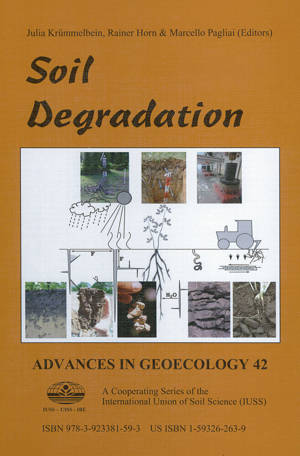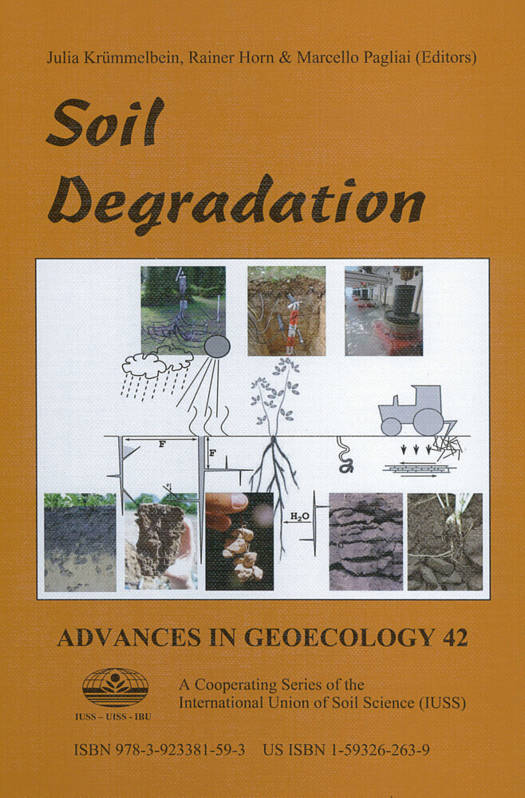
- Retrait gratuit dans votre magasin Club
- 7.000.000 titres dans notre catalogue
- Payer en toute sécurité
- Toujours un magasin près de chez vous
- Retrait gratuit dans votre magasin Club
- 7.000.0000 titres dans notre catalogue
- Payer en toute sécurité
- Toujours un magasin près de chez vous
Description
Soils are regularly exposed to different kinds of external loads, which can be described as static or dynamic and are always variable in loading time and magnitude. How far these external forces and soil management strategies coincide with the approach of sustainability of soils and their functions in a changing world with an intensely growing population is often discussed controversially. The most recent flooding events in Germany, Poland, Austria, Czech Republic, etc. and the catastrophic landslides in Italy, etc., also visualize the enormous effects and threats which must be linked to the manmade soil degradation due to non-site adjusted management approaches in combination with climate change-induced intensified rainstorm events etc. This idea becomes even more relevant with increasing intensity of soil cultivation-induced changes of mechanical, hydraulic and physicochemical soil processes and functions. The result of such processes must be defined as a degraded system, which certainly requires a better and more process based understanding of the dominant processes under the aspect of requested crop yield increase, better filtering and buffering for clean drinking water production as well as also concerning a less intense climate gas emission to the atmosphere (global change effect). In the following, various aspects of mainly mechanical soil degradation will be described in the book elucidating the various scale effects as well as the consequences also for soil erosion and its quantification. Eight contributions deal with scale dependent processes of soil degradation from micro- to macroscale and they also describe the interactions between soil particles and chemistry on soil strength. The rheological approach including the differentiation between various chemical properties gives a fascinating insight into the soil processes and properties. On such a basis also the following up processes of the aggregate level can be better understood and it certainly also helps to link results with a more complete concept. The basis for mechanical processes is still the effective stress equation which in itself can be subdivided in the various scale effects. Finally both a more complete picture of the strengthening but also of the degradation processes can be derived and countermeasures can be developed. These countermeasures also include natural soil regeneration or amelioration approaches based on the quantified internal soil strength and the information about the actual mechanical sensitivity of the soil being threatened by soil compaction and deformation. The first paper of Baumgarten and Horn deals with the assessment of soil degradation by using a scale-spanning soil mechanical approach followed by Khaydapova et al. who study with the impact of Anthropogenic Load on rheological properties of typical Chernozems. The effect of aggregation on soil strength and the risk of soil degradation for soils derived from volcanic ash is described by Fuentes et al., while Stumpf et al. define aggregate properties of a constructed soil in Southern Brazil. How far organic carbon affects the mechanical strength and biological properties of single aggregates is defined by Mordhorst et al. Zink et al. define an approach to quantify subsoil compaction on cable construction sites while Levy and Mamedov deal with the bulk soil susceptibility to deformation in different agricultural management practices and discuss the applicability of water retention curve patterns. In their contribution Weisskopf et al. describe interesting results concerning evolution of structural properties of an arable soil after compaction under different regeneration pathways. Krummel-bein and Horn finally introduce the circular characteristics of soil structure formation and degradation and following implications. The consequences of non-site adjusted soil management on soil erosion are the topics of two contributions by Pellegrini et al. about the assess
Spécifications
Parties prenantes
- Editeur:
Contenu
- Nombre de pages :
- 339
- Langue:
- Anglais
- Collection :
- Tome:
- n° 42
Caractéristiques
- EAN:
- 9783510653805
- Format:
- Livre relié
- Dimensions :
- 170 mm x 240 mm
- Poids :
- 810 g

Les avis
Nous publions uniquement les avis qui respectent les conditions requises. Consultez nos conditions pour les avis.





